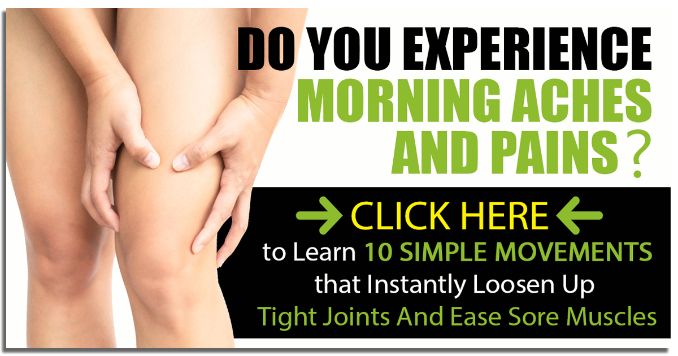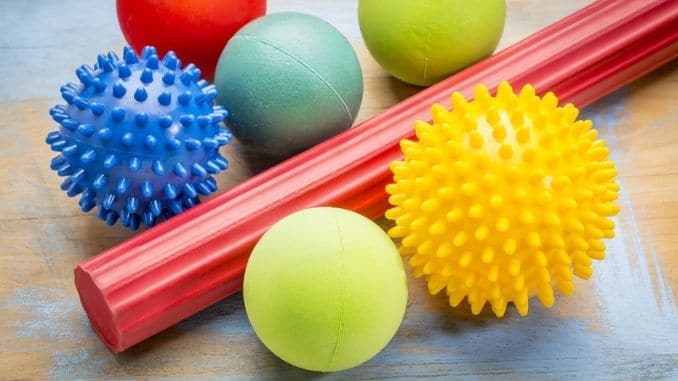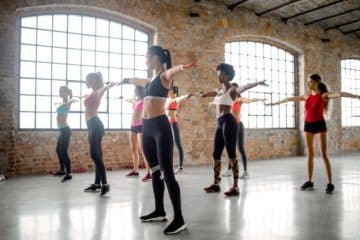With the often prohibitive costs of physical therapy, more and more people are looking for ways to rehabilitate injuries and reduce muscle soreness from home. Thankfully there are many tools now available that help improve your recovery time and decrease your chances of future injuries. We have shared some of our favorite tools and recommended exercises below.
1. Foam Roller
The foam roller is an incredibly versatile tool designed to roll out tight or sore muscles. Many athletes roll out their muscles before and after a workout to help decrease muscle soreness. Foam rollers are also often used for injury recovery.
Move into a forearm plank position with the foam roller under your body, just above your knees. Maintain good alignment with your head, shoulders, hips, and legs. Contract your core, then push from your forearms to run the foam roller from the top of your knees, to your hip area and back. Repeat the movement.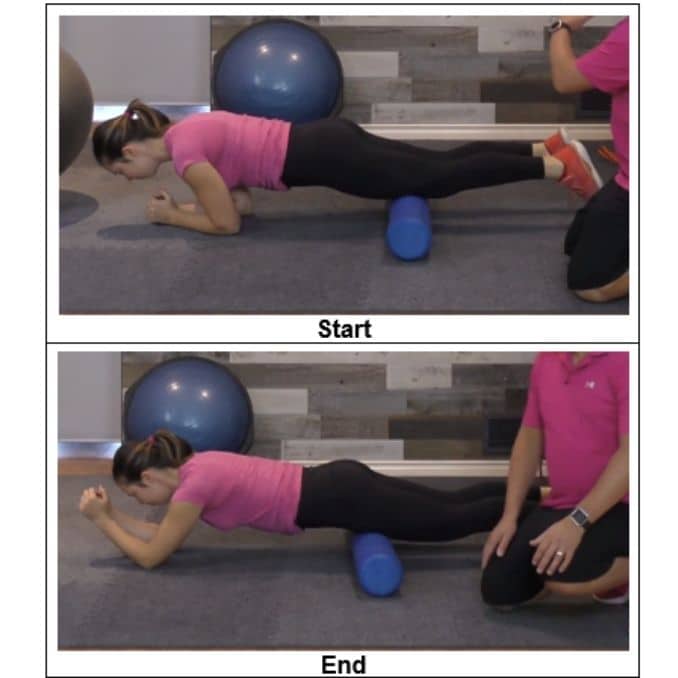
Foam Roller
Start off with 1 set of 5-10 repetitions.
2. Recovery Ball
The recovery ball is great for pinpointing smaller areas of tightness, giving a deeper, more concentrated self-massage. The size and density of your ball will determine the intensity of the massage.
For this exercise, either use a tennis ball, softball or any moderately dense ball for added pressure. Begin in an upright standing position with your back against the wall, maintaining good alignment with your upper body. Place the ball against the wall behind your back. Roll the ball from the bottom of your neck to your shoulder blade area and back and lastly, repeat the movement.
For any tight or painful spots, press down and roll the ball in small circular motions. Increase or decrease the pressure as needed. Repeat the movement.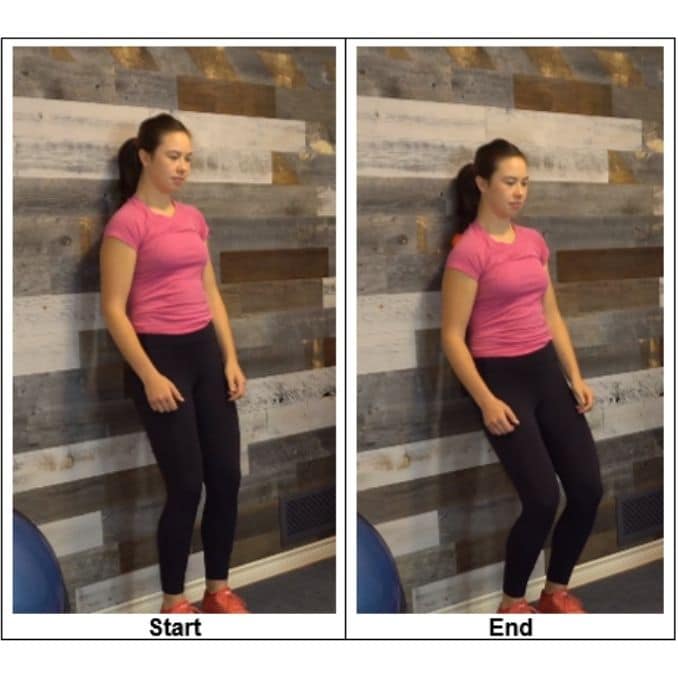
Recovery Ball
Start off with 1 set of 5 repetitions on each side.
3. Stability Ball
The stability ball is a favorite tool for many physiotherapists, and is often incorporated into different fitness classes. Be sure to select the correct ball size for your height and follow the instructions for proper set up and use.
Begin in an upright kneeling position with your hands on the stability ball. Tighten your core and shift your hips back, extending both arms as you roll the ball forward. Drop your head and arch your back slightly. Return to the starting position and repeat the movement.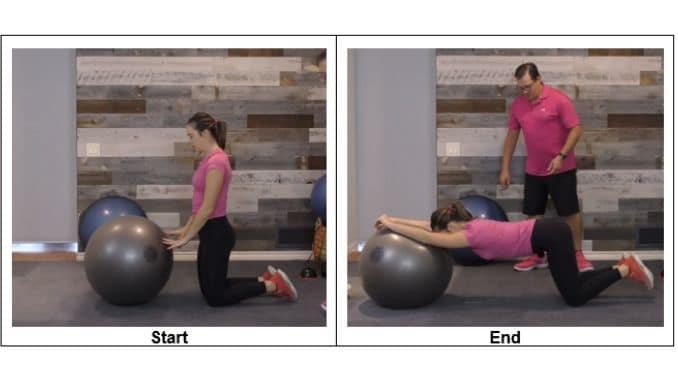
Stability Ball
Start off with 1 set of 5 repetitions.
4. Self Massage
Sometimes the best tool for injury recovery and prevention are your own two hands. Self massage can be incredibly effective.
Begin in an upright standing or sitting position. Lift one hand in front of your body with your palm facing upward. Locate any trigger points in your palm and massage the sore spots with your thumb in an up and down or small circular motion. Increase or decrease the pressure as needed, utilizing tools to speed up recovery and reduce muscle soreness. Repeat the movement on the opposite hand.
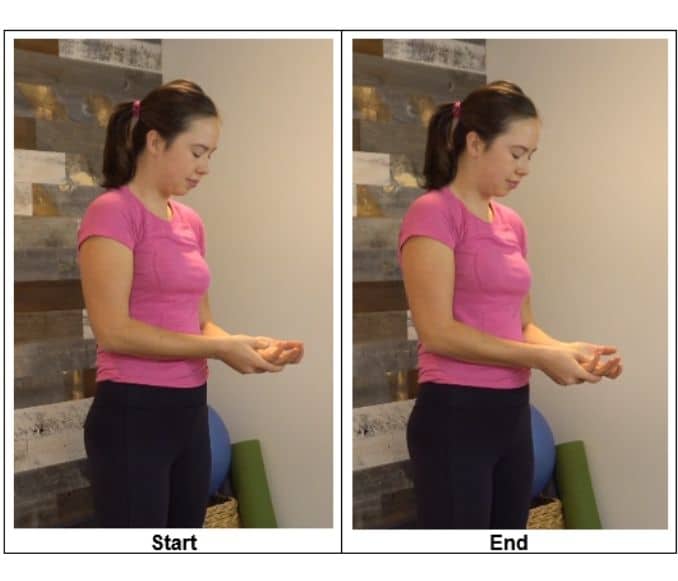
Self Massage
Start off with 1 set of 5 repetitions on each side.
5. Stretching
a. Static Stretching (Hamstring Stretch)
Stretching regularly can decrease muscle tightness, help increase flexibility and mobility, improve balance, and decrease the chance of injuries. Static stretching is best done when your muscles are already warm.
Begin in an upright standing position, maintaining good alignment with your head, shoulders and hips. Hinge through your hips to bend your upper body forward as you straighten one leg in front of your body. Flex your foot so that your toes point towards the ceiling and reach for your foot with both hands. Hold this position for 20 seconds. Return to the starting position and repeat the movement on the opposite side, utilizing tools to speed up recovery and reduce muscle soreness.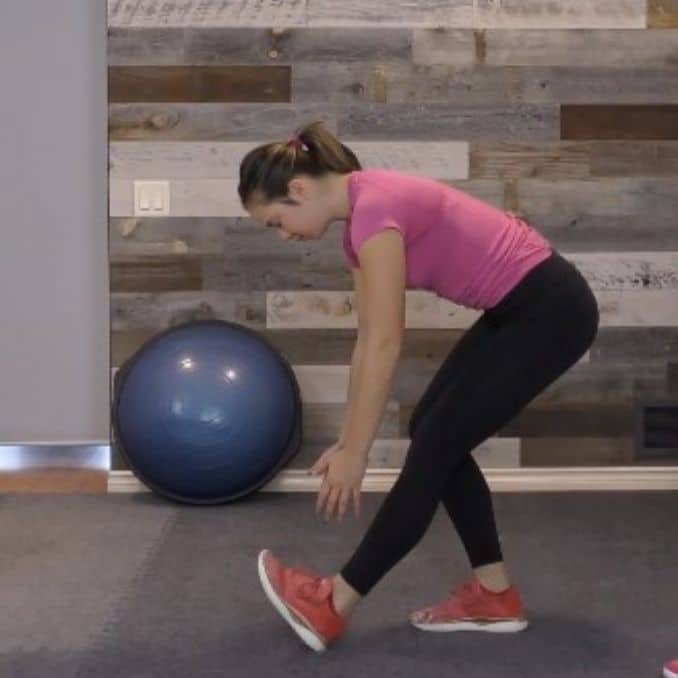
Static Stretching (Hamstring Stretch)
Start off with 1 set of 1 repetition on each side, holding for 20 seconds.
b. Dynamic Stretching (March Kicks)
Dynamic stretching is a great way to warm up your muscles before exercising.
Begin in an upright standing position with your feet shoulder-width apart, maintaining good alignment with your head, shoulders, hips, and legs. Contract your core and kick one leg up towards the ceiling, reaching for your toes with your opposite hand. Return to the starting position and repeat the movement on the opposite side.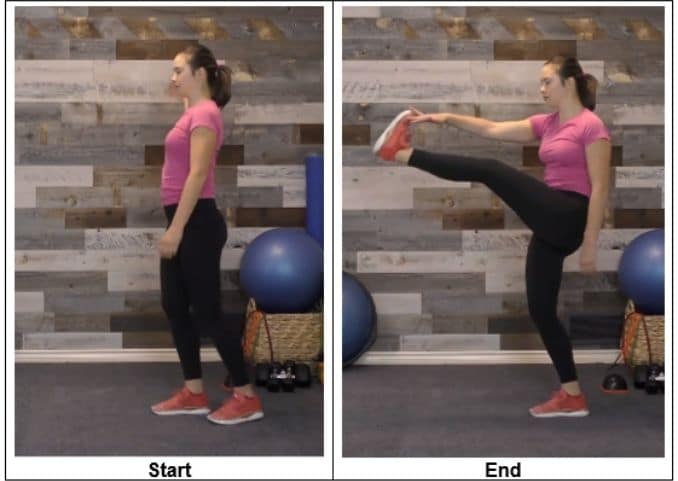
Dynamic Stretching (March Kicks)
Start off with 1 set of 5 repetitions on each side.
With increased activity during and after workouts, definitely drink more water. This will help facilitate your recovery and decrease muscle soreness. Be sure to give the recovery tools and stretches above a try and let us know if they help. Also check out some of our other blog posts that highlight ways to use foam rollers, stability balls and other recovery tools.
Learn the top 10 morning stretches to loosen tight joints here.
Ready to start your day feeling refreshed and ready for anything? Discover the Top 10 Morning Movements to Loosen Up Your Joints now! Embrace flexibility, banish stiffness, and kickstart your day with vitality. Don't wait, dive in and experience the difference today!
